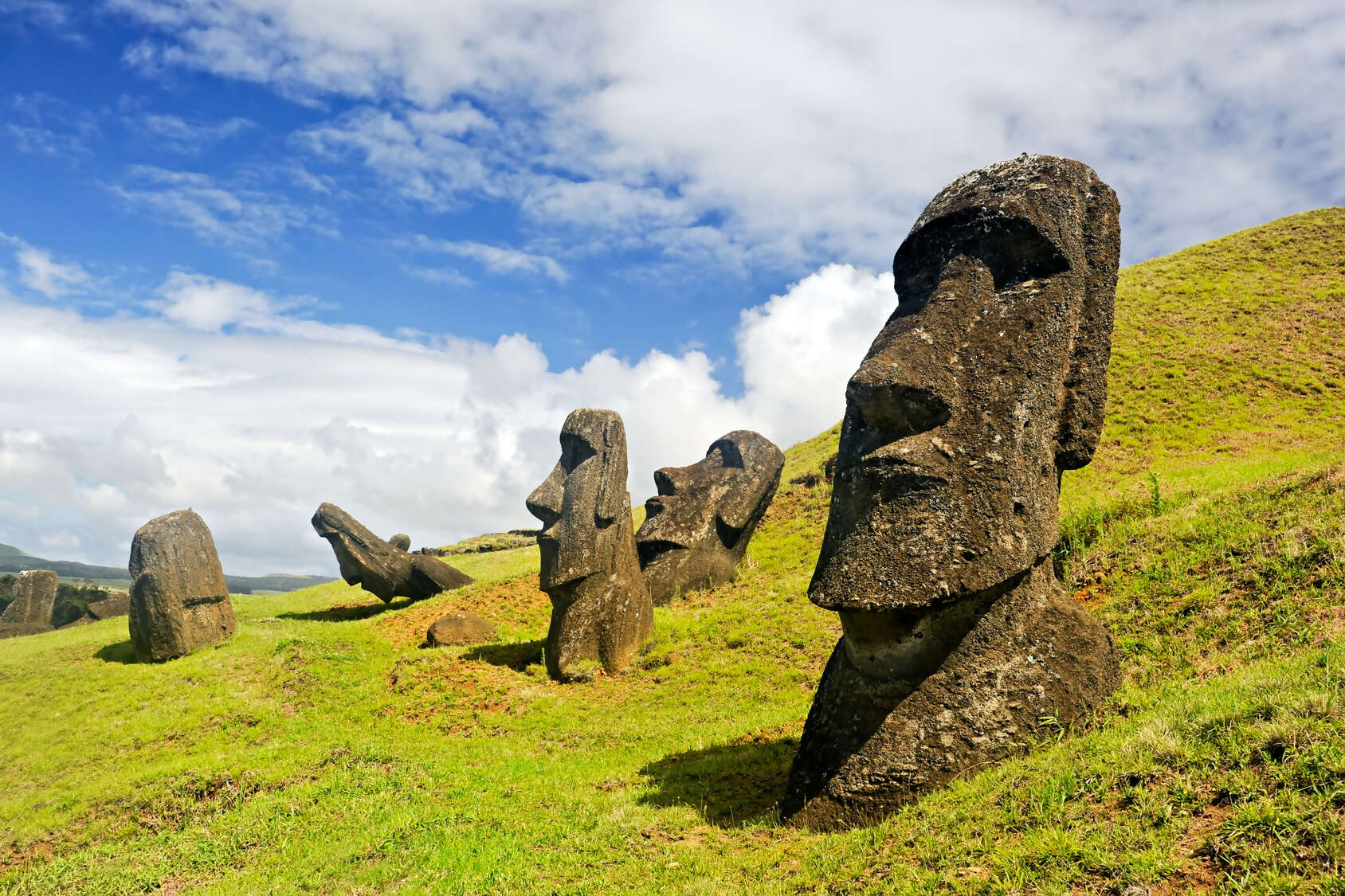Easter Island is one of the world’s most famous archaeological sites, yet it is also one of the least visited. Easter Island’s most dramatic claim to fame is an array of almost 900 giant stone figures that date back many centuries.
Easter Island is one of the world’s most famous archaeological sites, yet it is also one of the least visited. The Island was known as Rapa Nui to its earliest inhabitants, which was christened Paaseiland, or Easter Island, by Dutch explorers in honor of the day of their arrival in 1722. The island covers roughly 64 square miles in the South Pacific Ocean, and is located approximately 2,300 miles from Chile’s west coast and 3,700 kilometers east of Tahiti.
Rapa Nui was annexed by Chile in the late 19th century and now maintains an economy based largely on tourism. In 1995, Easter Island became a UNESCO World Heritage Site, with most of the island protected in the Rapa Nui National Park
Easter Island’s most dramatic claim to fame is an array of almost 900 giant stone figures that date back many centuries. The statues reveal their creators to be master craftsmen and engineers, and are distinctive among other stone sculptures found in Polynesian cultures. There has been much speculation about these statues, in particular, how they may have been constructed and transported.
Here are some interesting facts about the island’s statues:
- The large statures are called Moai and are believed to have been carved between 1100 -1680 AD.
- It’s a common misconception that the Easter Island statues are just heads. However, the statues in fact also have torsos, with most ending at the top of the thigh, while some are complete kneeling figures.
- It is believed that each statue represented a deceased family ancestry line.
- The largest raised moai is called "Paro". It weighs 82 tons and is 9.8 m (32.15 ft) tall. The average size of all the statues is 4m (13 ft) tall and 14 tons.
Are you interested in visiting Easter Island? Ask us how to get there.




